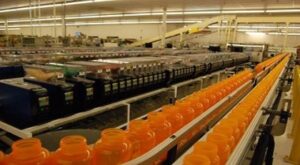 WASHINGTON, DC – During the first year of the pandemic, the nation learned just how susceptible its healthcare system was to supply-chain problems and how relying on overseas manufacturers for pharmaceuticals and medical supplies can be dangerous when shipping lanes slow or stop entirely. In the aftermath, Congress pressed federal healthcare agencies, VA especially, to begin shifting to domestic manufacturers and to leverage its buying power to boost American companies.
WASHINGTON, DC – During the first year of the pandemic, the nation learned just how susceptible its healthcare system was to supply-chain problems and how relying on overseas manufacturers for pharmaceuticals and medical supplies can be dangerous when shipping lanes slow or stop entirely. In the aftermath, Congress pressed federal healthcare agencies, VA especially, to begin shifting to domestic manufacturers and to leverage its buying power to boost American companies.
The vast majority of pharmaceuticals have at least some components processed overseas, however. And despite its size, VA’s purchasing leverage is not so powerful that it can make large shifts in the market at will. While VA is expected to spend $8 billion in 2023 on pharmaceuticals, that represents between only 1% and 2% of the total amount spent on pharmaceuticals nationwide.
“The impact of the COVID-19 pandemic heightened our awareness of our reliance on sources outside the United States for raw materials and the manufacture of certain products,” Michael Parrish, VA’s chief acquisition officer, explained to the House VA Oversight Subcommittee last month. “This dependence is not just a VA problem. It’s a national problem that’s been years in the making.”
It’s a challenge that might take years to overcome, VA officials noted.
One area where federal agencies hope to make quicker progress is with personal protective equipment (PPE). In 2021, Congress passed the Make PPE in America Act, directing federal agencies to shift to buying American-made PPE.
That shift has been slow, though, and Congress is concerned that VA will have the same difficulties with this law as it has had with the long-standing Buy American Act. A VA Office of the Inspector General report released last year outlined a long history of VA non-compliance with the 90-year law that puts limits on federal agencies making large purchases from foreign manufacturers. VA officials assured the subcommittee that the agency is working on improving compliance and instructing its purchasing officers how to navigate the multiple layers of regulations.
In April, VA and other federal leaders met with PPE manufacturers to help raise awareness of federal healthcare agencies’ needs and to get a sense of what is available from American manufacturers.
“We’re hyper-focused on where we need to be with industry,” said Andrew Centineo, VA’s director for Procurement and Logistics. “Industry feedback is that we will provide you with the products. We have to make sure the demand signal is there.”
“A lot of people aren’t fully certified, and that’s part of the challenge,” he added. “But we will embrace and want to buy from American manufacturers that are fully compliant. … There are about 1,500 products that we’re expecting to look at. We let our folks know if there’s a product out there, let us know about it.”
VA also is looking to take a more proactive approach with more essential medications. A recently-launched pilot project is taking two drugs–atropine and hydralazine injections–and working to bolster domestic manufacturing.
“These are injectable drugs and have been known to be prone to drug shortages,” explained Thomas Emmendorfer, PharmD, VA’s director for Pharmacy Benefits Management Services. “We’ve developed these clinical requirements and giving a preference toward domestic manufacturers. We just started with two, [but] when you look at the FDA report on the state of pharmaceutical quality, [an] estimated 52% of the essential medicines are completely reliant on foreign manufacturing sites. What that means is that at VA, we’re trying, but we’re also moving at the speed of industry.”
According to Emmendorfer, only 8% of the active pharmaceutical ingredients of essential medications are made solely domestically. Of those whose raw ingredients come from overseas, only 18% are assembled into their final form domestically.
“If the pilot’s successful, we’ll definitely look at expanding to other drugs,” he said.
